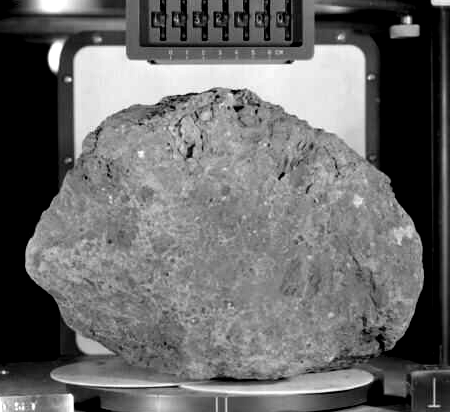Moon rock's Earth origin plotted
 Researchers have discovered a Moon rock that appears to have been thrown there from Earth.
Researchers have discovered a Moon rock that appears to have been thrown there from Earth.
New analysis of lunar rock samples retrieved by astronauts almost 50 years ago has found one of the samples may be originally from Earth, thrown into space when an asteroid struck our planet billions of years ago.
The sample collected during the 1971 Apollo 14 lunar mission was found to contain traces of minerals with a chemical composition common to Earth and very unusual for the moon.
The discovery was made by Curtin University scientists on a rock on loan from NASA.
Research author Professor Alexander Nemchin, from Curtin’s School of Earth and Planetary Sciences, said the 1.8 gram sample showed mineralogy similar to that of a granite, which is extremely rare on the moon but common on Earth.
“The sample also contains quartz, which is an even more unusual find on the moon,” Professor Nemchin said.
“By determining the age of zircon found in the sample, we were able to pinpoint the age of the host rock at about four billion years old, making it similar to the oldest rocks on Earth.
“In addition, the chemistry of the zircon in this sample is very different from that of every other zircon grain ever analysed in lunar samples, and remarkably similar to that of zircons found on Earth.”
Professor Nemchin said the chemistry of the zircon lunar sample indicated that it formed at low temperature and probably in the presence of water and at oxidised conditions, making it characteristic of Earth and highly irregular for the moon.
“It is possible that some of these unusual conditions could have occurred very locally and very briefly on the moon and the sample is a result of this brief deviation from normality,” Professor Nemchin said.
“However, a simpler explanation is that this piece was formed on the Earth and brought to the surface of the moon as a meteorite generated by an asteroid hitting Earth about four billion years ago, and throwing material into space and to the moon.
“Further impacts on the moon at later times would have mixed the Earth rocks with lunar rocks, including at the future Apollo 14 landing site, where it was collected by astronauts and brought back home to the Earth.”







 Print
Print